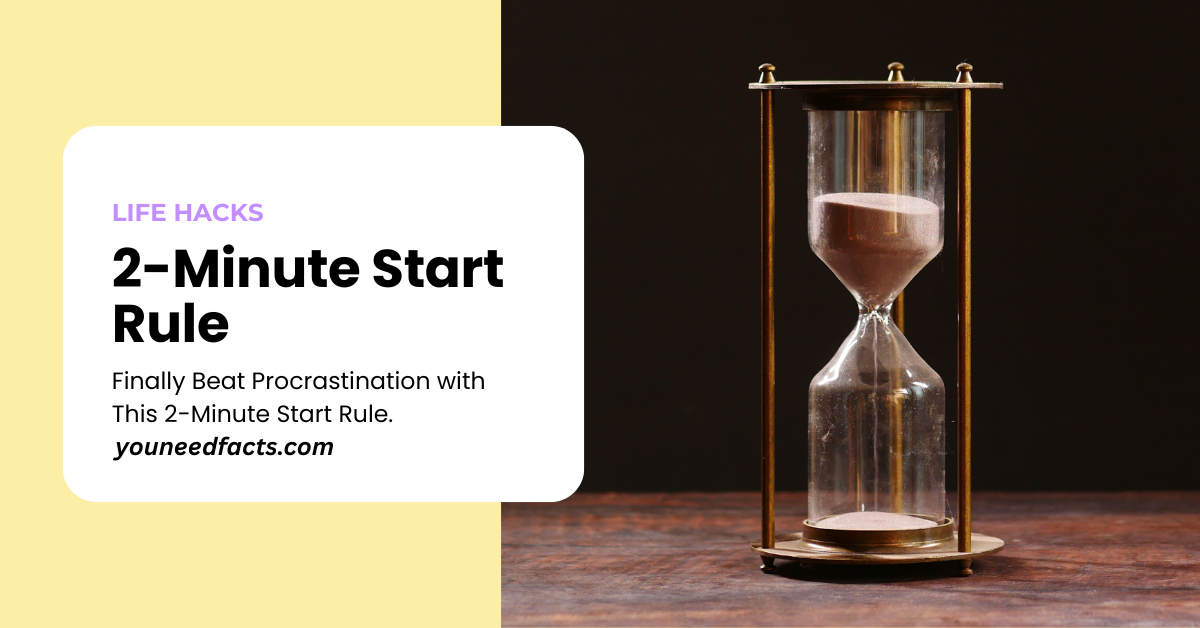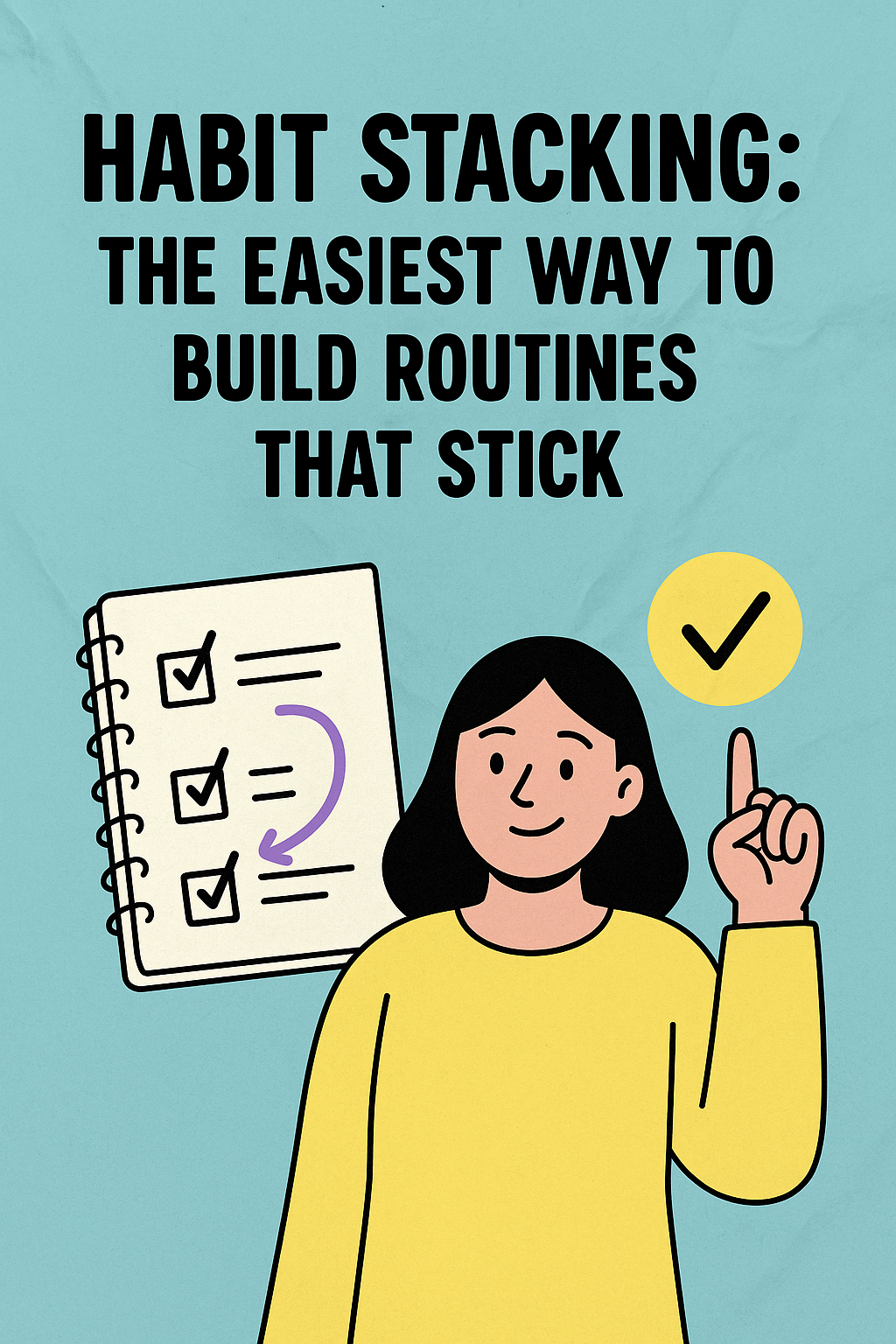Summary: You can beat procrastination faster than you think. The 2-minute start rule asks you to begin the task for just two minutes, no more. When you start, friction drops, motivation rises, and momentum carries you forward.
What Is the 2-Minute Start Rule, and Why It Works
The 2-minute start rule is a tiny commitment, you agree to work for only two minutes, then you can stop with zero guilt. This small start lowers the emotional wall that makes starting feel heavy. It respects your energy, it activates curiosity, and it builds a quick win. Starting creates motion, motion creates motivation, and motivation makes the next step easier.
Psychologists have shown that emotions drive much of procrastination, not laziness. When a task feels threatening or huge, your brain protects you by avoiding it. A tiny start changes the feeling. If you want a short primer on the psychology of procrastination, see this clear overview from the American Psychological Association, Why people put off important tasks.
The Science of the 2-Minute Start Rule in Plain Language
- Mood repair, not willpower: You avoid tasks to escape discomfort. Two minutes feels safe, so you do not need extra willpower.
- Momentum beats inertia: Once you take the first step, your brain updates the story, you are already the kind of person who is working, not avoiding.
- Clear cues reduce friction: A tiny plan removes vague fear. When the next action is clear, starting feels simple.
How to Use the 2-Minute Start Rule Today
- Pick one anchor action: Identify the smallest visible step. Open the doc, lay out the shoes, or set a three line outline.
- Set a two minute timer: Promise yourself you can stop when the timer rings, you will have a clean win either way.
- Start without negotiation: Do not wait for motivation. Begin now, let action create it.
- Decide at minute two: Option A, stop and celebrate the win. Option B, keep going because you feel lighter. Both are success.
| Minute | Action | Why it works | What to say to yourself |
|---|---|---|---|
| 0 to 1 | Prepare one small cue, open the file, lay out the notebook, wear the shoes | Removes friction, creates a visible starting line | “Only two minutes, then I can stop” |
| 1 to 2 | Do the first action, write three sentences, sort five emails, read one paragraph | Builds momentum, lowers anxiety | “Just begin, results follow action” |
| After 2 | Choose, stop with a win, or continue with lighter energy | You control the session, autonomy keeps motivation high | “I choose to stop or continue” |
Real Life Examples You Can Copy
Studying: Read the first paragraph, highlight one sentence, and write one question about it. If you feel better, keep reading. If not, stop, you still moved.
Writing: Open the editor, drop a five point outline, and write the first rough line. Continue only if the words now feel easier.
Fitness: Put on shoes, do ten squats, and walk for two minutes. When your body warms, decide whether to go longer.
Work admin: Open your task manager, clear two low effort items, and send one reply. Decide whether to keep going.
Common Mistakes to Avoid
- Turning two minutes into pressure: The rule is a permission slip, not a trap. You earn the right to stop.
- Picking a step that is too big: If your first action feels heavy, shrink it. One sentence beats none.
- Chasing perfect conditions: Do not wait for the right mood. Two minutes creates a good mood.
Build a Daily Habit with Small Wins
Stack the 2-minute start rule onto existing routines. After coffee, open the planner. After lunch, sketch the next step. After dinner, prep your workspace. Celebrate tiny progress with a check mark or a short note. Consistency compounds, and your identity shifts toward action.
Join Our Daily Learning Plan
Want one short, science based fact in your inbox each day, plus a weekly deep dive, join our email plan. Check our homepage, and if you have questions, reach out on our contact page. We built this site to help you grow with clear, practical ideas.
FAQ
Two minutes is a gateway, not a quota. It creates motion, you can stop and still call it success. Progress grows from many small starts.
No, you are using a gentle commitment to lower fear. You stay honest, you give yourself real permission to stop after two minutes.
Use it any time you feel stuck. It works for big projects, boring chores, or creative work. The more you practice, the faster you start.
Yes. Creativity grows with motion. A tiny start clears the fog, and ideas appear once you are in the work.
Stopping is still a win. You trained a start. Many days you will choose to continue, some days you will not. Either way, you are building the start habit.


